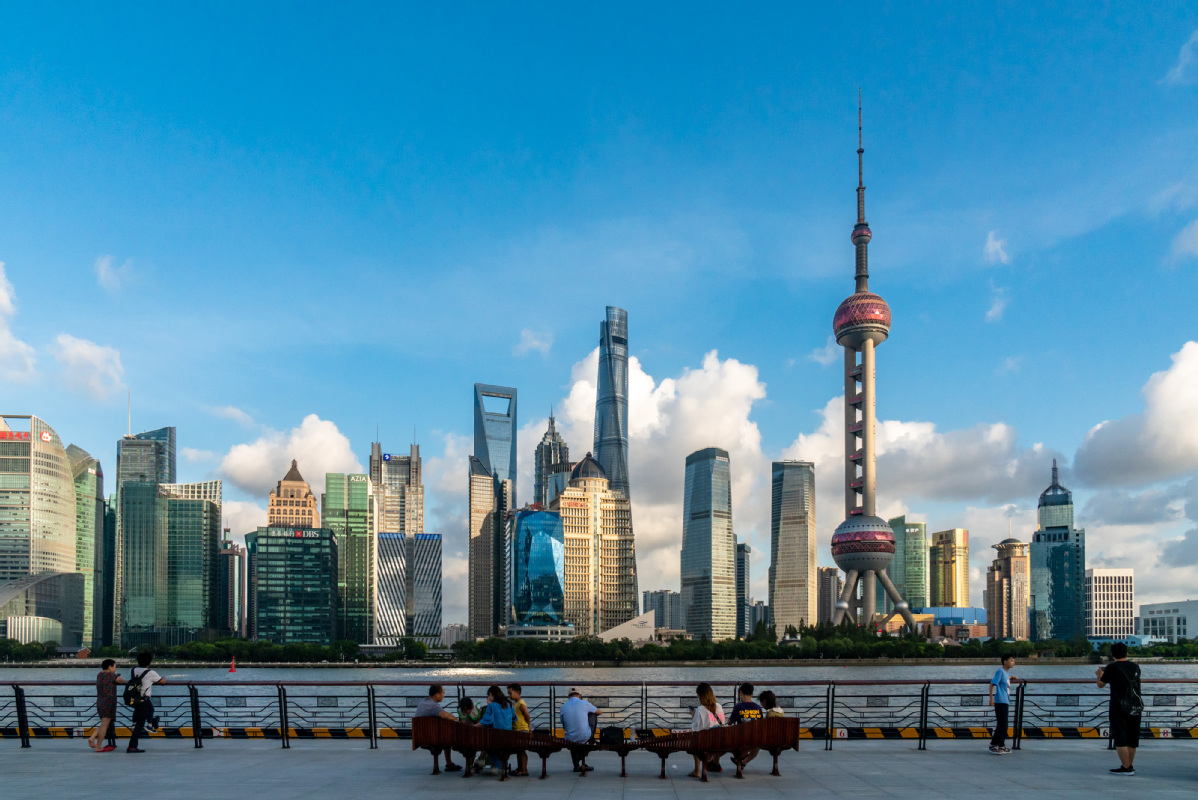
China's economy exhibited remarkable resilience and adaptability in 2024, maintaining its growth momentum and achieving a growth of 5 percent despite the domestic and external challenges. The growth rate is in line with the government's GDP growth target of "around 5 percent". According to the National Bureau of Statistics data, China's GDP reached 134.91 trillion yuan ($18.80 trillion) in 2024.
The Chinese government has implemented several policies to boost domestic demand and maintain financial stability. These policies have not only facilitated growth in key economic areas, including industrial output, but also, to some extent, helped stabilize the real estate market.
Through targeted reforms, fiscal support, strengthened trade relations, promotion of innovation and implementation of strategic economic initiatives, China has boosted domestic confidence. These developments have consolidated China's pivotal role in shaping the global economy and influencing technological advancement.
READ MORE: GDP of 27 Chinese cities surpasses 1 trillion yuan in 2024
China accounted for nearly 30 percent of global economic growth last year, profoundly impacting the global economy. China's contribution reaffirms its status as a leading economic powerhouse, and highlights its critical role in advancing international trade, fostering investment and driving technological innovation.
China's foreign trade reached a record high in 2024, with its total value reaching 43.85 trillion yuan, up 5 percent year-on-year. Exports increased by 7.1 percent year-on-year to 25.45 trillion yuan while imports grew by 2.3 percent to 18.39 trillion yuan.
China's growth generates ripple effects across multiple sectors, including manufacturing, technology and services. Its strong economic performance stabilizes global markets, creates demand for exports from other countries, and helps the economic recovery of regions most affected by the COVID-19 pandemic.
China's contribution to global growth in 2024 further cemented its prominent role in post-pandemic global recovery. Notably, China's growing imports are helping developing countries to boost their exports and expedite their economic recovery. By granting zero-tariff treatment to all least-developed countries with diplomatic ties with China, the country has shown its commitment to fostering global economic development and acting as a responsible economic partner.
This policy not only strengthens trade ties with these countries but also helps them integrate into the global economy, promoting sustainable growth and helping reduce poverty. A major driver of Chinese exports continues to be the Global South, especially countries involved in infrastructure projects under the Belt and Road framework. In fact, in 2024, Belt and Road countries accounted for more than 50 percent of China's total foreign trade for the first time. This underscores the growing importance of the Belt and Road Initiative in strengthening trade ties and economic cooperation between China and other developing countries, consolidating the country's role as a key player in global trade and infrastructure development.
China has been expanding its export markets in the Global South, promoting mutually beneficial, trade. While the Global South seeks access to China's vast market for its raw materials, China's investment in infrastructure under the Belt and Road framework creates for these countries critical development opportunities, fostering economic growth and connectivity. This synergy not only strengthens trade ties but also promotes sustainable development and economic cooperation, benefiting both China and its trade partners in the Global South.
China's exports to the United States now account for 15 percent of the total, down from 20 percent in 2018, which shows China is not solely reliant on the US for its exports' growth. At the same time, China remains the most cost-effective source of many products imported by the US, significantly benefiting US consumers and manufacturers. As a matter of fact, this dynamic supports many US jobs, highlighting the interconnectedness and mutual benefit of the China-US trade relationship despite the shifting global dynamics.
The diversification of China's foreign trade underscores its growing focus on expanding ties with the Global South and Belt and Road-partner countries, and shows that the country is reducing its reliance on the traditional Western markets, the US and the European Union in particular.
More important, China's rapid technological advancements cannot be hindered by unethical trade barriers or baseless investigations, measures often perceived as attempts to curb China's peaceful rise. China will continue to promote innovation and strengthen its position as a global leader in trade and technology, while diversifying its export portfolio by focusing on high-tech products, including electric vehicles, 3D printers and industrial robots, all of which are experiencing strong growth — thus transforming the country from a manufacturer of low-cost goods to a global leader in advanced technology and innovation.
New forms of trade, such as cross-border e-commerce, are booming, extending China's reach in the global market. Given the rising protectionism, trade tensions and geopolitical challenges, concerns about the future of globalization are growing. Yet free trade remains a cornerstone of a competitive global economy, because free trade promotes prosperity, generates socioeconomic benefits and creates more jobs.
ALSO READ: China has to embrace innovation-driven future
By fostering more efficient and competitive industries, free trade enables countries to thrive in an interconnected world. China's continued commitment to open trade and economic cooperation underscores its role as a stabilizing force in the global economy and a proponent of shared growth and development.
Therefore, the US and the EU should focus on fostering healthy competition with China rather than adopting protectionist policies to curb China's rise, because that will hinder innovation and economic progress. Instead of building trade barriers and adopting restrictive policies, they should invest in research and development, especially in the high-tech sector, to enhance their global competitiveness. By advocating for open trade, establishing strategic trade and investment partnerships, and adopting innovation-driven policies, the US and the EU can create economic opportunities that benefit their people and businesses. A competitive approach, instead of a confrontational attitude, will help them build economic resilience and gain global leadership.
The author is director of BRISL, an independent and pioneering Sri Lanka-based organization that specializes in the Belt and Road Initiative.
The views don't necessarily reflect those of China Daily.


